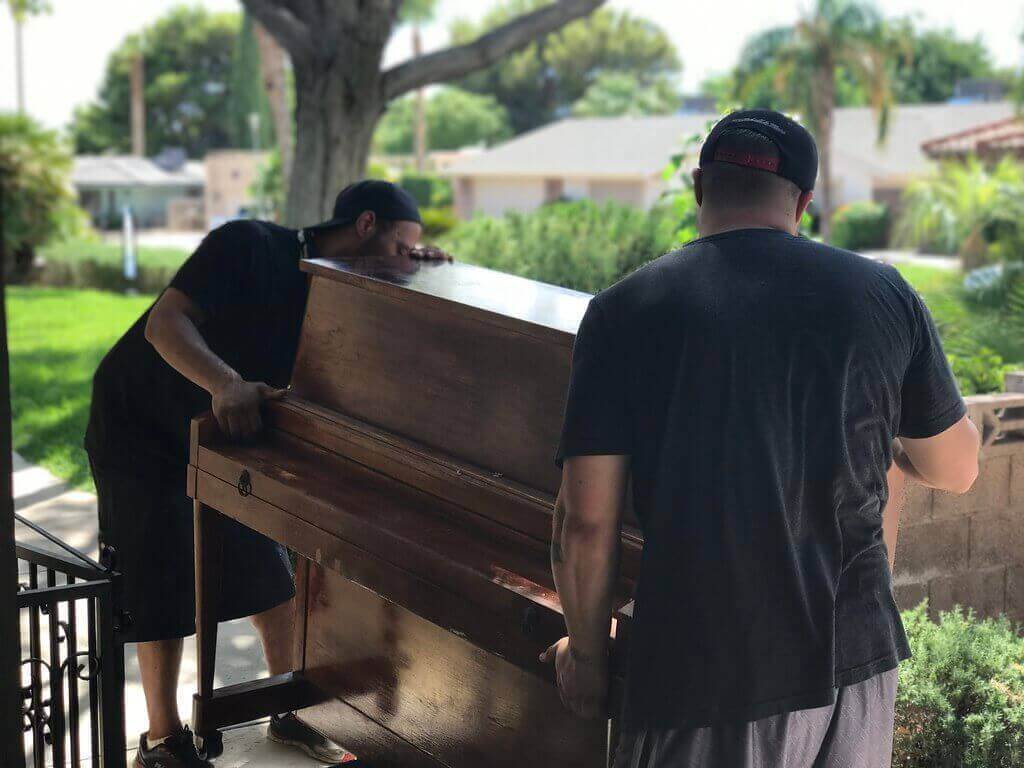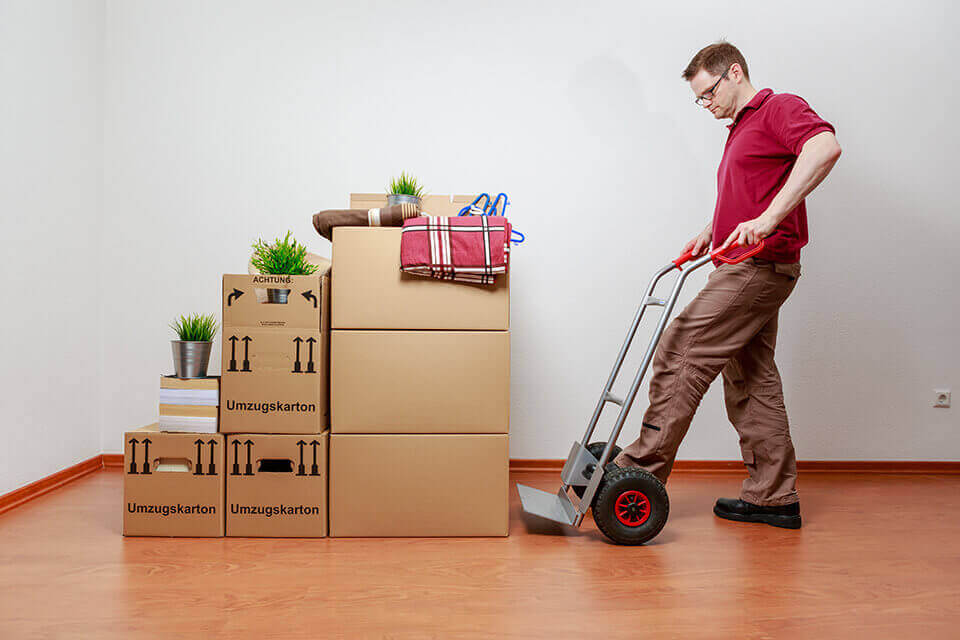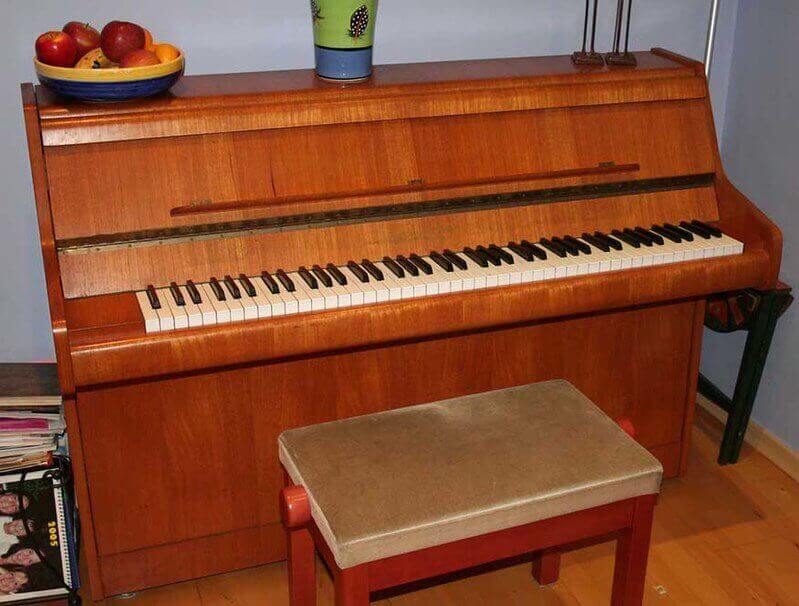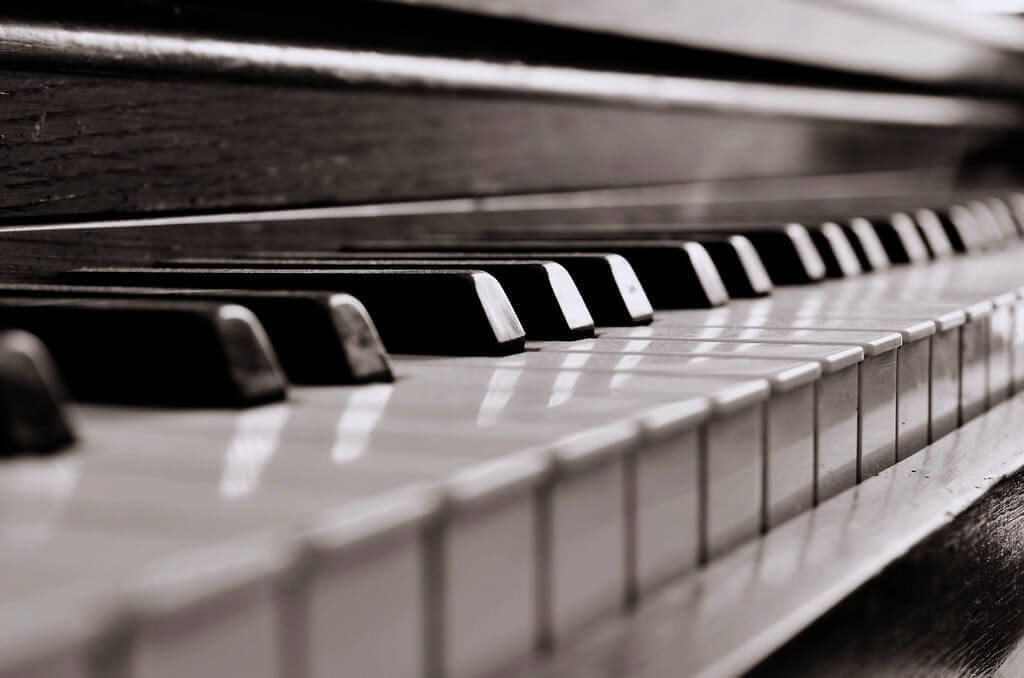You are moving cross country, everything is packed and ready to go, except for a big heavy instrument looking at you from another room. Are you thinking that you don’t need help from long distance movers because you know how to move a piano? Do a double check before tackling it – we made a guide to help you learn how to handle this heavy and expensive piece without hurting yourself or causing any damage. Take a look at how transporting this item can be done easily while moving state to state.


Before you start making plans to move your instrument, you should know how heavy it is and what makes it so massive. Pianos typically weigh from 300 to 500 lbs, while larger upright (vertical) or concert grand ones can be almost 1,000 lbs heavy, or even more. Its casing, iron plate, lid, and legs add up to the total weight of the instrument. How to deal with all of this by yourself? It’s certainly not as simple as learning how to pack a guitar for shipping, but it can be done.
If you’re relocating this instrument and you’re looking for the cheapest way to move out of state, you’ll surely be interested in how to move a piano yourself. Since you probably gathered your friends and family to help you do this, keep in mind that it can be difficult and that you will need the right equipment. Doing this yourself will save you some money, and you will be more flexible with the move, but there are also disadvantages. If you don’t have any experience with relocation, try to find someone who has to give you a hand. Don’t try to lift it up, so you don’t hurt yourself, and don’t count on the instrument’s casters as they aren’t made for relocating. DIY relocations can go smoothly if you know how to organize your move.
If you want to do this as a pro, you should do good research and see what is available online on various websites or on Youtube. If you know someone who plays or owns this instrument, ask them if they have relocated recently and if they have some tips that will be useful. Pianists sometimes have to relocate their instrument because of concerts or tours, so they surely have experience.

Before you even start getting the required equipment, measure all the doors, see how many flights of stairs you have, and check if the truck has enough space for the instrument. Be wise, and don’t let a narrow hallway or a tight truck ruin your relocation. If you don’t want any moving stress, get the tape measure, and make sure that all the pathways are wide enough for the instrument to pass through. Also, if you’re moving to a smaller home, measure the new place as well, so you don’t end up in front of the door helpless. That, however, likely doesn’t apply if you’re moving from an apartment to a house.
Relocating pianos can cause damage to the floor, stairs, or some objects or furniture that can be in the way. That is why you should clear the paths and protect the flooring. You can cover it with blankets that can be taped to the floor, so it doesn’t wrap around your feet and trip you.

Moving a piano isn’t about the muscles, but rather about logic, physics, and protection since this is a delicate, yet huge and weighty item. Your motto should be safety above everything else, so here’s what you will require if you decided not to hire professional movers for the relocation of your piano:
You should be able to find all of this in a hardware store or in home improvement stores.
Vertical and grand pianos don’t look the same, and because of that, they need a different approach, but they can be covered and protected by the same materials. Follow the instructions based on what type you own. The number of people needed to help you out also depends on this.

How to move a grand piano without making any mistakes? When you gather all the necessary information and equipment, it’s time for action. Relocating grand or baby grand ones should start with covering them. Protect the lid by wrapping it, and do the same with the keys and all sides. Every part should be covered with blankets and then taped well. Take a screwdriver and remove the pedals and legs. Your team should hold the instrument firmly on each end while doing this. Cover those pieces with blankets and shrink wrap, as they will be moved separately.
Bring the skid board and place the instrument on it, and then secure it with ratchet straps. You will move the instrument by pushing the skid board, while other helpers (at least one) hold it. If you have to get it down a flight of stairs, there should be three people to handle it. Go slow and very carefully so that everything is stable. Once you put it in the truck, it should be placed firmly and strapped against the inner wall. When you arrive at your new home and start unpacking after the move, reassemble the pedals and legs with a screwdriver. You will have to have assistance with that as well.
Are you interested in how to move an upright piano? We have the answer to that as well. Learning how to do this could be somewhat less complicated than the grand ones because there’s no disassembly before transportation. You should start by protecting the keyboard – close and lock the keyboard lid if it locks. Do the same with the pedals by covering them in blankets and taping it to secure it. Then, cover the front, back, and sides, and tape them as well. After that, you can cover the whole instrument with shrink wrap, just so you can be sure that no part is left unprotected and that the blankets can’t move. Hoist the instrument on the four-wheel dolly, while two other people should hold it on the sides. Use the lever method, so you don’t hurt your back or knees.
There is another option – you can cover and wrap the instrument once you put it in the truck. Some professional movers prefer this method, as it is easier to handle a piece that isn’t covered in thick layers of padded blankets. However, they do have a lot of experience, so we don’t recommend doing this unless you don’t have any stairs, and the instrument should be moved for a very short distance until it’s placed in a truck. Once you get to it, place it on wooden planks and strap it to the wall with the backside facing it.

Unless you moved your instrument from one room to another, you should tune it after changing the location. This is a very delicate instrument, so any change of environment can affect the tune, even if it’s well wrapped and protected. Also, it will be shaken and shifted during the relocation, so that can also call for the tuning. Humidity and temperature, or any other climate change, cause the wood to react differently, and it absorbs the moisture in the air, which causes a different sound. The wood can crack from the expansion or shrink from too little moisture. Once you relocate, give your instrument some time before tuning it – it’s best to it after three to five days.
There are ways to keep your tune stable. Firstly, relocate the instrument early in the morning or late afternoon to avoid high temperatures. Another tip is to install a humidifier system if you don’t already have it. You can use it in the transportation truck as well if there’s a power supply inside. That way, the instrument will have the moisture it needs, which will shorten the period of acclimation.

There is a list of things that movers won’t move, but this instrument isn’t on it. Hiring a reliable moving company would be the smartest move, as this relocation can lead to serious injuries. Professional cross country movers that have experience and the right equipment can do the moving easily, and you won’t have to worry about your safety or about the safety of your valuable musical instrument. You might save money by doing it yourself, but know that you might have a hard time claiming insurance in case something happens, and there will be a greater risk of damage. A reputable long-distance moving company can also provide you with packing services and with a high-end storage unit you can use in case your new home isn’t ready yet.